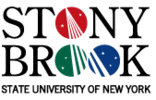
| IEEE International
Conference on Shape Modeling and Applications |
| Stony Brook University, June 4 - 6, 2008 |
News and Updates
Call for Papers
Organization
Important Dates
Paper Submission
Technical Program
Invited Speakers
Best Paper Award
Workshops
Mini-Symposia
Venue
Travel
Hotels
Social Events
Registration
About Stony Brook
Contact Us
Previous Conferences
Sponsors
Other Events
| Call for Papers and STARs |
|
IEEE International Conference on Shape Modeling and Applications 2008, (Shape Modeling International 2008, or SMI'08) will be held on June 4-6, 2008, in Stony Brook University, Stony Brook, New York, USA. General Information
Shape Modeling International provides a premium international
forum for the dissemination of new mathematical theories and
novel computational techniques for modeling, simulating, and
processing digital representations of shapes and their
properties to a community of researchers, developers,
practitioners, and students in academia and industry across a
wide range of fields. In 2001, SMI has merged with the Implicit
Surface Workshop and is now run as an annual event alternating
between Asia, Europe, and America. SMI'08 will immediately
follow the ACM Solid and Physical Modeling Symposium 2008
(SPM'08), to be held on June 2-4, 2008, in Stony Brook
University, Stony Brook, New York, USA. Both SPM'08 and SMI'08
events will be co-located in Stony Brook, and are parts of the
2008 Stony Brook Modeling Week that features International Joint
Convention on Shapes and Solids (ICSS'08). SMI'08 is
co-sponsored by IEEE, Stony Brook's Computer Science Department, and ACM
SIGGRAPH (pending). The SMI'08 conference proceedings will be published by
IEEE Computer Society Press. Selected papers of outstanding
quality will appear in major journals including
IEEE Transactions on Visualization and Computer Graphics, International
Journal of Shape Modeling, Graphical Models
and The Visual Computer. Conference Topics Papers presenting original research are being sought in all areas of shape modeling and applications. The technical topics for SMI'08 include (but are not limited to): NEW FEATURES for SMI08 This year, SMI'08 is soliciting contributions in terms of state-of-the-art (STAR) reports. STAR submissions will follow the same deadlines as full and short papers. Also, a video and multimedia track is launched for submitting any additional material. Accepted videos will be included on the proceedings CD/DVD, together with an abstract, and made available through the SMI website. The third edition of the SHREC - 3D Shape Retrieval Contest will be organized in conjunction with SMI'08. The general objective of the contest is to evaluate the effectiveness of 3D-shape retrieval algorithms. The results of the contest will be presented during the conference. Instructions will be posted at the conference web site and http://www.aimatshape.net/event/SHREC. Paper Format and Submission Information for Authors Abstracts (150-300 words, including title,
the list of authors and their affiliations, keywords, and
abstract) are requested in order to facilitate the review
process. The submitted abstracts should have the following
structure: 1. Paper title; 2. List of authors with their
affiliations; 3. List of keywords; and 4. Paper abstract (plain
text in ASCII, 150-300 words, no images) Important Dates
Submissions Instructions & Guidelines Contributions should be formatted using the IEEE Proceedings style
Journal Publications Selected papers of outstanding quality that have been presented at SPM'08 will be published in special issues of:
Home
|
News and Updates |
Call for Papers
|
Organization
|
Important Dates
|
Paper Submission Technical Program | Invited Speakers | Best Paper Award | Workshops | Mini-Symposia Venue | Travel | Hotels | Social Events | Registration | About Stony Brook | Contact Us Previous Conferences | Sponsors | Other Events Page maintained by webadmin |